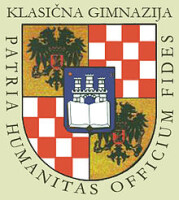Ivor Lapi Review of XVI gymnasium, Zagreb
The classical grammar school began its work on the...
The classical grammar school began its work on the initiative of the Zagreb city government with the consent of the Croatian Parliament and with the special efforts of Ban Ivan II. Draskovic. Namely, as early as 1602, the city of Zagreb invited the Jesuits to settle in Zagreb and open their grammar school. The Jesuits Ivan ani and Petar Vragovi played a major role in the opening of the gymnasium. They came to Zagreb at the end of October 1606, and officially opened the school after eight months of preparation. Ivan ani became the first Jesuit superior in Zagreb and thus the first director of the Gymnasium. In the first year, 260 students were enrolled, and later that number increased. The gymnasium was ceremoniously opened on the Feast of Pentecost on June 3, 1607. The opening was attended by a large number of people, among whom stand out the Bishop of Zagreb imun Bratuli , the Bosnian Bishop Franjo Ergeljski and the Croatian Ban Ivan II. Draskovic. On the opening day of the school, the first play "Actio comica" in Latin was performed, in which young actors celebrated the beauties of the homeland of Croatia, and this tradition of drama has been maintained continuously to this day.
From the very beginning of the work of the Gymnasium, there were two problems, namely: accommodation of students and Jesuits and finding a suitable foundation. Finding a foundation was extremely necessary because it was the only way to finance the existence and functioning of the Gymnasium. At that time, the Jesuits lived in their college, which was very unsuitable, even dangerous to health, built of wood and wicker. Students were educated in classrooms that were rented near the college. At that time, there was no accommodation for poor students, ie seminaries, or a properly arranged church, which was supposed to be an integral part of the educational process. Three decades after its founding, an appropriate CIAGNida foundation was found that enabled the construction of a seminary and appropriate premises for the education and life of the Jesuits. Thanks to donations from the Croatian nobility and citizens, the church of St. Catherine in 1632. By the end of the 17th century, the church of St. Katarina and the college were severely damaged several times in the fires that engulfed Zagreb.

Comments: